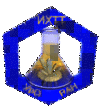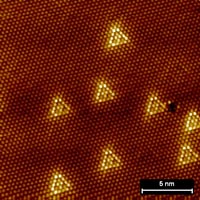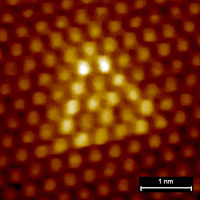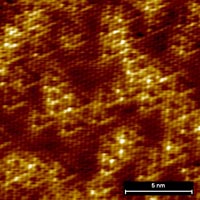I.I. Ogorodnikov, M.V. Kuznetsov, F. Matsui, D.Yu. Usachov, L.V. Yashina
Appl. Surf. Sci., V. 505, P. 144531.
DOI
ABSTRACT. X-ray photoelectron holography (XPH) is new tool in surface science capable to visualize in real space coordination of the atom of interest (emitter). To study surface phenomena the ultimate and variable (in the range of 1–5 ML) surface sensitivity is needed. Here we discuss possibilities to improve surface sensitivity of XPH by the example of Bi
2Se
3 (111) surface where different coordinations of the same kind of atoms are present in different layers. To reach ultimate surface sensitivity we used both lower electron kinetic energy and partial analysis of hologram related to grazing angle photoemission. Using calculations of diffraction patterns based on EDAC code and reverse reconstruction of the real space within SPEA-MEM formalism we evaluate the contribution of each atomic layer into diffraction pattern and found that the surface relaxation could be directly visualised at the kinetic energy less than 100eV, whereas the contribution of the second quintuple layer can be vanished at 200eV or below. The same effect can be achieved by partial analysis of hologram at grazing detection angles more than 55° to the surface normal. This approach enables broader practical applications of the XPH to various materials in applied surface science.



.jpg)
.jpg)

